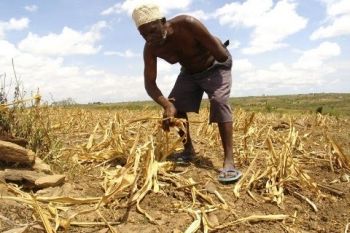
Publisher:
Bonnie King
CONTACT:
Newsroom@Salem-news.com
Advertising:
Adsales@Salem-news.com

~Truth~
~Justice~
~Peace~
TJP
Dec-13-2010 22:07

 TweetFollow @OregonNews
TweetFollow @OregonNews
Water Out of Thin Air
Danielle Nierenberg for Salem-News.comCollecting water from fog is a technique that has been used for almost 30 years in some mountainous parts of Chile; the technique's success is now used in the dry areas of South Africa.
 Sub Saharan Africa |
(SUB-SAHARA, African) - In many parts of sub-Saharan Africa, people are forced to travel long distances and spend hours at a time collecting the water needed for cooking and drinking from far away streams or wells. But the residents of Cabazane, South Africa have found a much less labor intensive alternative. They use gravity and let water come to them.
With the help of a team of scientists lead by Jana Olivier from the University of South Africa’s School of Agriculture and Environmental Studies, featured on AlterNet last month, the residents of Cabazane are using nets strung up across a nearby mountain pass to harvest water from the air.
Built at an altitude of 1,600 meters, steel cables held by wood posts support the two layers of shade clothe nets used to catch tiny droplets of water from the passing mountain fog near Brooks Nek Pass. The drops of water create run-off that is caught in gutters built at the bottom of the nets. This water is then carried by tubes down the side of the mountain and to the village. With each square meter of netting providing up to five liters of water per day, Cabazane can collect hundreds of liters on a good day.
And, most importantly, coming from the clouds, the water is very clean—an especially valuable commodity in area previously suffering from water shortages. The nearest stream to the village is two kilometers away and contaminated by animal use. Residents who used the stream were often exposed to water-borne diseases. Once dams were used to collect water in the area, but extreme drought has even dried up this source.
Nandi Ntsiko, a resident of Cabazane, in the Alternet article, “having piped water was a pipe dream for us. We were forced to share drinking water with animals in this stream. The situation was dire.”
Now the villagers not only have a steady supply of clean water, they have enough of it to store in newly constructed tanks. The netting also provides the additional benefit of being completely gravity-driven. No electricity is needed to power this innovation, making it affordable and environmentally friendly, and the technology is simple enough that maintenance is relatively easy.
Collecting water from fog is a technique that has been used for almost 30 years in some mountainous parts of Chile, and the project at Cabazane has been so successful that it’s already been replicated in other dry areas of South Africa, including Venda and Limpopo.
To read more about innovations that improve access to water, see: Getting Water to Crops, Access to Water Improves Life for Women and Children, Reducing Wastewater Contamination Starts with a Question, and ECHOing a Need for Innovations.
Source: Worldwatch Institute
Emphasizing on the ground research, project co-director Danielle Nierenberg is currently traveling throughout sub-Saharan Africa to meet with farmers, farmers groups, local government representatives, funders, and NGO’s. You can follow her research and the resulting conversations on the Nourishing the Planet blog: http://www.nourishingtheplanet.org
Articles for December 12, 2010 | Articles for December 13, 2010 | Articles for December 14, 2010

googlec507860f6901db00.html
Salem-News.com:



Terms of Service | Privacy Policy
All comments and messages are approved by people and self promotional links or unacceptable comments are denied.
[Return to Top]
©2025 Salem-News.com. All opinions expressed in this article are those of the author and do not necessarily reflect those of Salem-News.com.